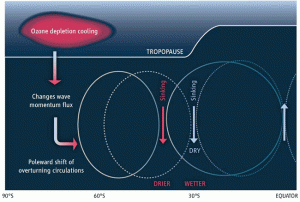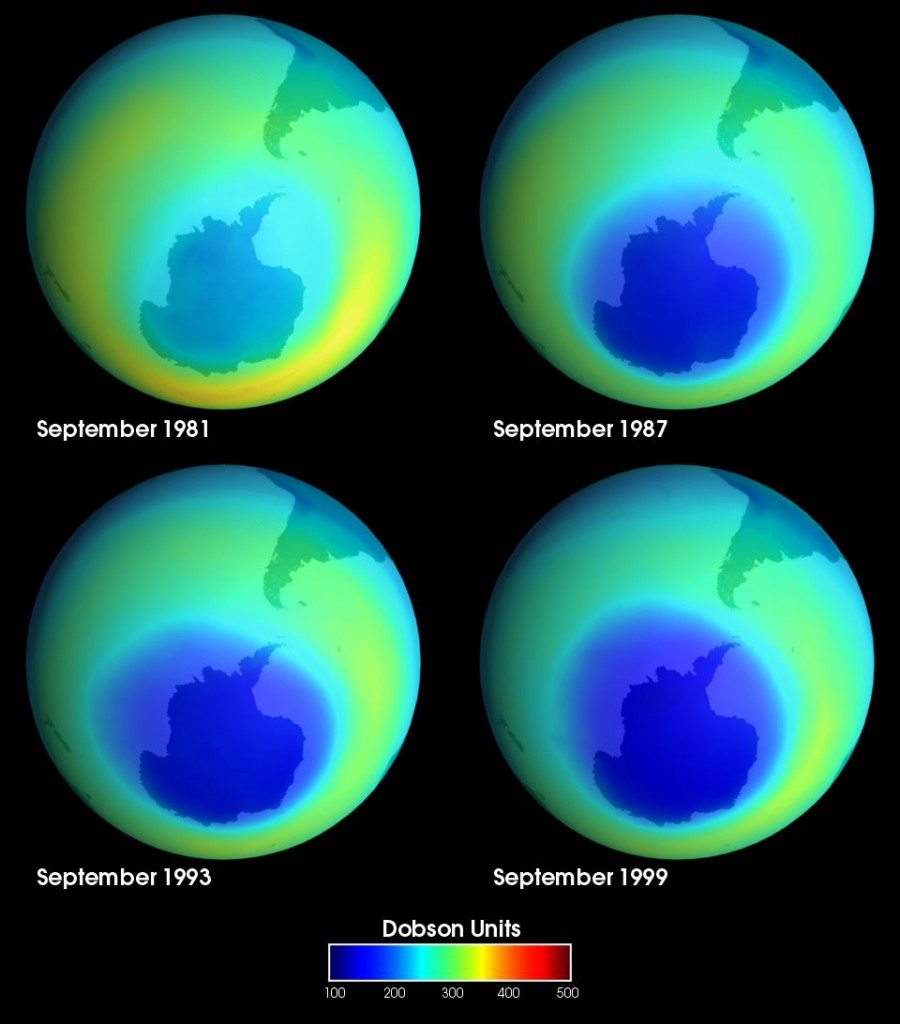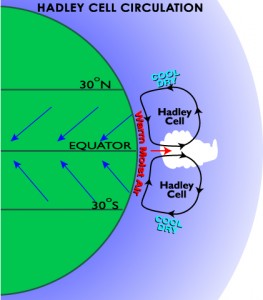22 May 2011
Ozone and Climate Change in Antarctica
Posted by Dan Satterfield
Antarctica has behaved rather strangely compared to what’s been expected for the rest of the planet as greenhouse gases rise. That in itself, is not unexpected, because Antarctica is unlike anywhere else on the planet. It’s much colder than the Arctic, and surrounded by a frigid ocean with a continuous fast-moving current that circles the bottom of the world. As the temps. warm, Antarctica will see more snow as the frigid air there will be able to hold more moisture, while still being well below freezing.
Antarctica is warming in rapidly in some places (like the Antarctic Peninsula) while cooling slightly in others. Some new research may have hit upon some better explanations of how man-made changes to the atmosphere are changing the climate in the Southern Hemisphere. It has to do with the Ozone hole over the southern polar regions which does not make a lot of news these days, but it’s still there and will be for a while. The Montreal Protocol banned the CFC’s that caused it, and it should start to close by the middle of this century.
I say, “should start to close” because that assumes that we don’t start putting other ozone destroying chemicals in the atmosphere, (which I would not bet against). The Montreal protocol, is indeed proof positive that the world can work together when faced with an environmental catastrophe and the loss of ozone certainly qualified. It turns out that the ozone loss has had a much greater effect on the climate south of the equator than previously thought.
OZONE DEPLETION CHANGING CLIMATE
A paper in SCIENCE this month used a couple of different climate models to look at what kind of climate effects the ozone depletion we’ve already observed causes. It turns out that the models agreed very well that the drop in precipitation in the southern sub-tropics, (and an increase in the mid southern latitudes) is a direct result of the ozone drop!
The researchers used two different climate models, (each using different parametrization of sub grid scale processes) and the result was the same in both. Science loves confirmation and when you get the same result in two or three different ways, it obviously increases the confidence that the findings have some merit.

Image From SCIENCE: The stratospheric ozone depletion over Antarctica alters atmospheric waves and this causes circulation cells (solid and dotted circles) to shift poleward, altering precipitation patterns in the SH subtropics. Pre–ozone-hole circulation cells are illustrated with dotted lines and blue labels; depleted ozone cells are illustrated with solid lines/ red labels. Credit to: S. Lee & S.B. Feldstein
To understand what’s happening, you need to know about Hadley cells. These are large-scale planetary circulations that move warm air from the equator to the poles and balance out the Earth’s temperature. There are three in the northern hemisphere and 3 in the southern, each with their own name but that is not really important for this discussion.
Hadley Cell Effects
Ever notice that there are a lot of deserts on Earth at about 30 degrees north latitude? The reason is that air rising from the equator sinks back down at about 30 degrees north latitude. The shape of the continents makes a big difference, but this is the chief reason you have deserts in these areas and this is due to the Hadley circulation. High pressure, with little rain, develops over areas where the air is sinking back down (see the graphic).
If you can move that circulation north or south a few degrees, you will cause significant changes to the climate. Some areas will get wetter and some areas will get drier. This is precisely what has been seen in the southern hemisphere, and the climate models reproduce it amazingly well when you drop the ozone in the stratosphere!
Climate change deniers frequently like to claim that humans could not possibly change the climate on our large planet. This is patently ignorant statement that cannot be backed up with any fact, and this one paper shows that we did indeed change the climate, by manufacturing freon and hair spray.




 Dan Satterfield has worked as an on air meteorologist for 32 years in Oklahoma, Florida and Alabama. Forecasting weather is Dan's job, but all of Earth Science is his passion. This journal is where Dan writes about things he has too little time for on air. Dan blogs about peer-reviewed Earth science for Junior High level audiences and up.
Dan Satterfield has worked as an on air meteorologist for 32 years in Oklahoma, Florida and Alabama. Forecasting weather is Dan's job, but all of Earth Science is his passion. This journal is where Dan writes about things he has too little time for on air. Dan blogs about peer-reviewed Earth science for Junior High level audiences and up.